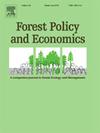Stakeholder perceptions in mangrove management in the Jaffna Peninsula, Sri Lanka
Abstract
Mangroves are recognised as social-ecological systems where ecological dimensions constanty interact with human dimensions. In the Jaffna Peninsula of Sri Lanka, mangroves constitute the primary forest type. However, a destructive civil war spanning over 25 years, heavily affected the local vegetation and local inhabitants. Large patches of mangrove forests were damaged and remained inaccessible for a considerable time, compelling most of the population to temporarily abandon their land. This study aimed to investigate the main mangrove goods and services that the local population benefits from and gather opinions of mangrove management stakeholders regarding mangrove conservation in the Jaffna Peninsula through a mixed methods approach. Ethnobiological surveys were conducted with coastal communities, along with Q methodology, expert opinion surveys and additional semi-structured interviews with mangrove management stakeholders. Ethnobiological surveys revealed a significant distancing of local communities from mangrove goods and services. The Q methodology identified three discourses: community-oriented, government-oriented, and mangrove conservation oriented. Expert opinion surveys highlighted encroachment and pollution as major threats to mangroves. Issues raised in the semi structured interviews include challenges regarding land ownership permits during and after the war, weak interactions among different stakeholders with overlapping jurisdiction, failed replantation efforts and scarcity of scientific data for mangrove management. Addressing these issues is crucial not only for fostering effective mangrove management and conservation in the Jaffna Peninsula but also forpotentially benifittingother districts in Sri Lanka and beyond.

 求助内容:
求助内容: 应助结果提醒方式:
应助结果提醒方式:


